After Congress formally came out of the Bakhshi’s National Conference in 1965, it survived in factions amid internecine squabbling. Remote-controlled by the party High Command from Delhi, these divisions have given two brand political parties to Jammu and Kashmir, reports Yawar Hussain
Since October 27, 1947, the Congress (read AICC) has been part of 11 of the 19 governments that Jammu and Kashmir had. As free India is celebrating Azadi Ka Amrit Mahotsav to celebrate and commemorate 75 years of independence, the grand old party is literally decimated in Jammu and Kashmir. In 1999, Mufti Sayeed deserted the party and floated his own party, the PDP. Now in 2022, Ghulam Nabi Azad followed the same.
After putting in 35 years in Congress, Mufti said the national outlook of the party is too vast to accommodate the regional aspirations. At 73, when Azad left the Congress in 2022, he said the party – now in control of the fourth generation, has declined to a level that there is no room for repairs. In both the exits, however, the involvement of the “right-wing” was claimed.
The two exits, at two different points in history, had the same impact on the party’s Jammu and Kashmir operations. On the flip side of the exits, the party’s remote-controlled factionalism was a key contributor. It was less visible in Mufti’s exit unlike in Azad’s Mufti moment three decades later.
Decadal Factionalism
Factionalism has been Congress’s manufacturing defect. Ghulam Mohammad Sadiq, who was Jammu and Kashmir’s last Prime Minister and the first Chief Minister, was always in a state of cold war with Syed Mir Qasim, who led a rival group. The party was literally divided between pro-Sadiq and pro-Qasim factions from the mid-1960s and the rivalry continued till Sadiq was lowered in his grave. Sadiq was Chief Minister and head of the political executive and Qasim was the party chief in the state.
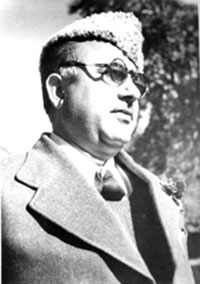
In 1967, Sadiq had appointed Mufti Sayeed, his old Democratic National Conference colleague, as the deputy minister for agriculture and cooperatives. This relationship, however, did not dissuade Sayeed from playing his role in a plot to topple his master. Ghulam Nabi Mir Lasjan, a veteran Congress leader, told The Caravan, that it was Sayeed who “hatched the plan.” He recounted that a group of 32 MLAs loyal to Qasim “went to meet the high command to seek permission to go for a no-confidence motion” against Sadiq. “Mufti was the first to resign as deputy minister,” Lasjan said. Indira, however, scotched the plan, Lasjan said, telling them to “reconcile” and keeping Qasim happy by appointing him the minister for public works.
Qasim, who eventually succeeded Sadiq as chief minister, blames the party’s high command for keeping the Congress in Jammu and Kashmir divided. “I and Sadiq were recognized as proverbial Jonathan and David in Kashmir politics but Congress used its old machinations in making us political rivals and enemies,” Qasim wrote, in his memoir, My life, My Time. “Congress became the type of agency for getting all dirt and dust into the J&K politics.”
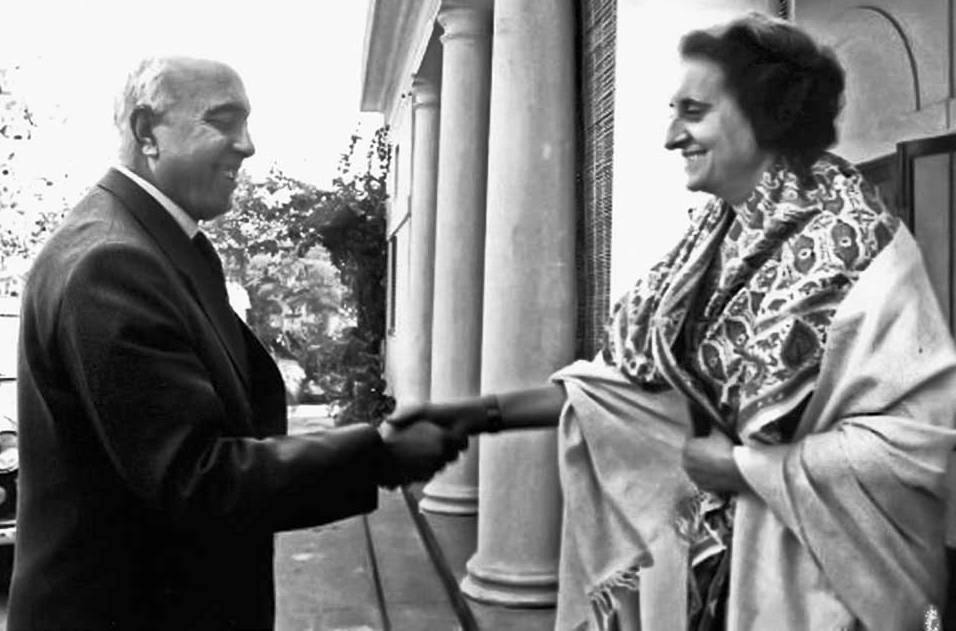
Exposing the Congress central leadership’s love for disintegrating its Jammu nd Kashmir unit, Qasim wrote that the party overtly or covertly raked up a smaller leader to cut to size a growing one. “This it did by projecting a lesser leader… by the overt or covert campaign.”
Qasim remained on the throne till February 25, 1975; when he stepped down to pave way for Sheikh Abdullah to become the chief minister following the Indira-Sheikh accord.
The time for cutting Qasim to size was now orchestrated by Indira Gandhi through Mufti Sayeed, now a cabinet minister under Qasim. He was appointed the PCCI Chief in 1975.
Post-accord, Sheikh became head of the House the Congress dominated. On the directions from Delhi, some Congressmen put in their papers to create space for the election of Sheikh and his colleagues. It triggered a crisis in Congress. Qasim wanted the situation to continue as per Delhi’s directions. Mufti, however, withdraws the support forcing an election. The bickering in the Congress between the pro-Sheikh government group of Qasim and the anti-Shiekh government group of Sayeed continued till the Shiekh got a majority for NC, which he revived. The 1977 elections literally destroyed Congress in Kashmir as NC won 47 of the 76 berths in the assembly. Among the losers was Sayeed, defeated from his hometown Bijbehara.
Three Factions
For Sheikh Government’s success, Mufti had to be taken out. Soon, he was taken as a minister in the central government. The development saw, the Congress existing in three factions by the 1980s.
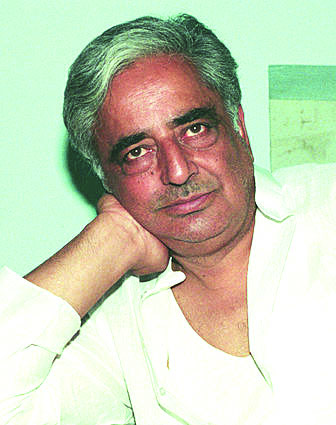
India Today report Infighting hits Cong in Kashmir valley, PCC meeting ends in name-calling exercise, on December 15, 1982, has detailed the three factions of Sadiq, Qasim, Mufti and Ghulam Rasool Kar.
“The pro-Sadiq group, which is patronised by Miss Mahmouda, a joint secretary in the All India Congress Committee(I), supports Qasim led group,” the report reads, “A party legislator from Jammu comments gloomily on these factions: ‘Under these circumstances, we can’t have a consensus on a president and Mrs Gandhi (Indira) is therefore bound to impose Sayeed on us again’.”
The report also details an incident in November 1982 in which, SS Sisodia, the then observer sent by the high command, “…watched helplessly as PCC(I) Secretary Shah Shaida accused PCC(I) President Mufti Mohammed Sayeed of building up his own faction in the party through a number of defectors to the Congress and “tightening” his grip on the organisation by giving them key posts.”
“Syed’s so-called caucus consists of Mian Bashir, a Gujjar MLA who was a deputy minister in the Sheikh’s government but is now PCC(I) vice-president; Malik Mohiuddin, MLA and former speaker of the Assembly who switched loyalties two years ago; GM Bawan, a former Janata Party man who forfeited his security deposit against the NC candidate in the 1977 elections; and Molvi Iftikhar, a Shia leader who was the Srinagar district president when he was in the Janata Party. Bashir and Malik have been allotted new jeeps and a salary of Rs 3000 each,” the report reads.
While Sayeed had a field, the high command had tacitly let Ghulam Rasool Kar, a Sopore-based politician cook up his own lobby inside the party. In 1983, after the name-calling incident between Qasim and Sayeed group, there was a “pyjama war” in a meeting at Fairview Guest House between Kar and Sayeed loyalists.
The rival factions fought each other and most of the leaders were stripped naked in the full glare of the media. This pyjama war dominated the news for a long time to the extent that when Prime Minister Rajiv Gandhi visited Srinagar, he publicly resented the happenings in the state Congress.
A Generation Shift
Sayeed was sidelined in the party post-Indira’s assassination. Rajiv Gandhi allied with Farooq Abdullah-led National Conference despite Sayeed’s protest. Sayeed, the man chosen by Indira to first oppose Shiekh Muhammad Abdullah and then Farooq Abdullah, was placated when his use wore out. Rajiv made Sayeed a Cabinet Minister at the Centre, with the Tourism portfolio. Sayeed was not happy with his removal from the State, and when Vishwanath Pratap Singh formed the Jan Morcha in 1989, he shifted sides.
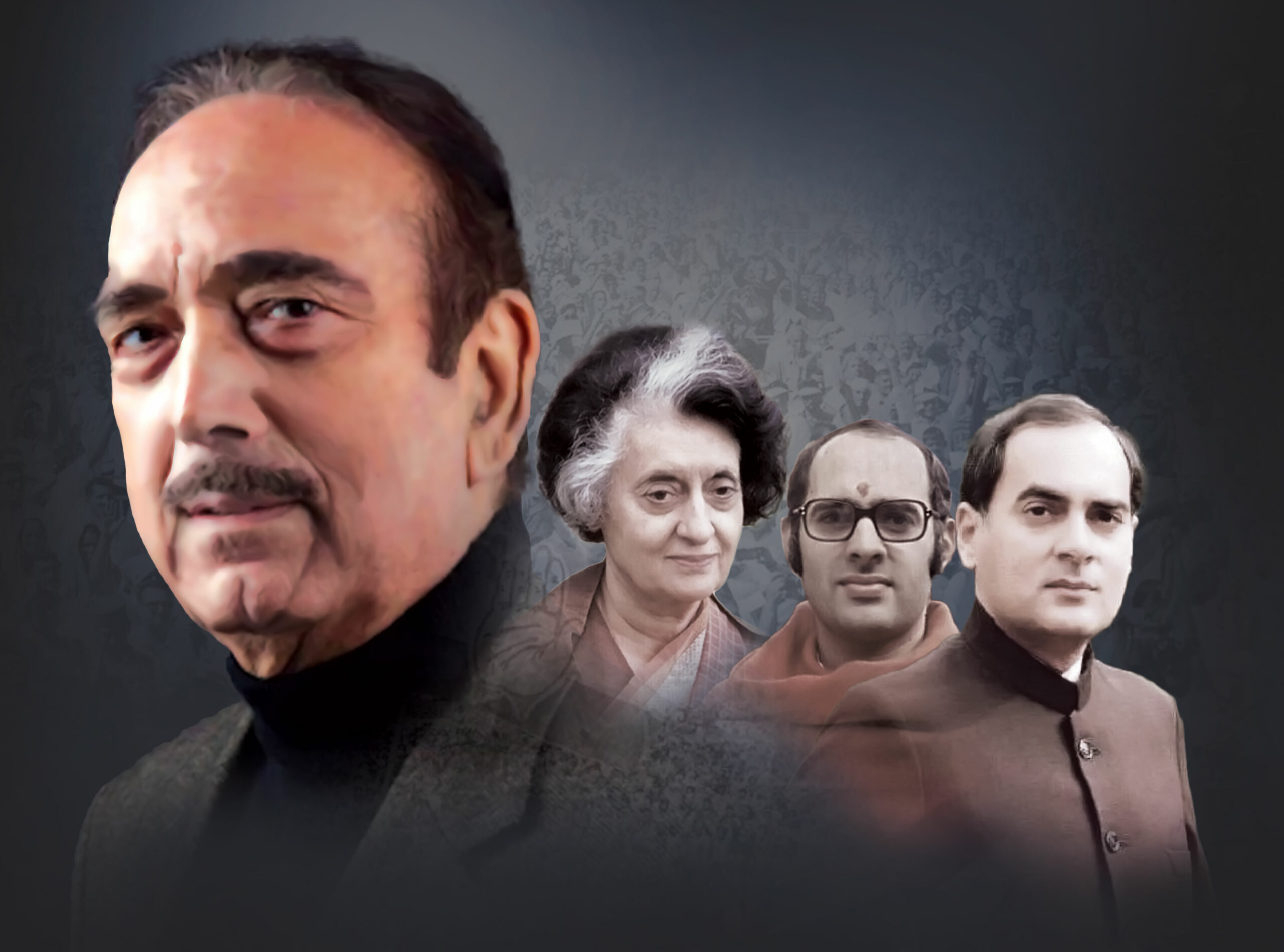 Post Sayeed’s exit from the party, the Congress infighting continued during the Farooq Abdullah-led NC-Congress coalition government. The infighting between the then Jammu and Kashmir Congress President Mohammad Shafi Qureshi and Ghulam Rasool Kar was out in the open.
Post Sayeed’s exit from the party, the Congress infighting continued during the Farooq Abdullah-led NC-Congress coalition government. The infighting between the then Jammu and Kashmir Congress President Mohammad Shafi Qureshi and Ghulam Rasool Kar was out in the open.
Former Jammu and Kashmir Governor Jagmohan Malhotra in his autobiography, My Frozen Turbulences writes: “The Congress was particularly divided. In July, the relations between the two main factions, one led by PCC chief, Mohammad Shafi Qureshi, and the other by Power Minister, Ghulam Rasool Kar, deteriorated.”
Congress was in tatters post-1999 when Mufti Muhammad Sayeed left the party again, after his 1996 re-entry, to float his regional outfit, the Peoples Democratic Party.
Azad Back Home
Ahead of the 2002 assembly polls, the party put the Jammu and Kashmir in the hands of trusted lieutenant, Ghulam Nabi Azad, a Kashmiri-speaking Jammu Muslim. Azad had risen the ranks at the central level quietly amid the factionalism at the state level.
The Congress won 20 of 87 seats in the 2002 assembly polls and Azad emerged a chief ministerial choice. But Sayeed’s old connections and political manoeuvring paved the way for him to lead a rotational chief ministerial government ahead of Azad.
Azad left the PCC president post for a general secretary level role on the national stage in 2004. His right-hand man Peerzada Mohammad Sayeed succeeded him. While Azad was away from Jammu and Kashmir politics till his appointment as chief minister in 2005, the party had groomed his bête noire in the party.
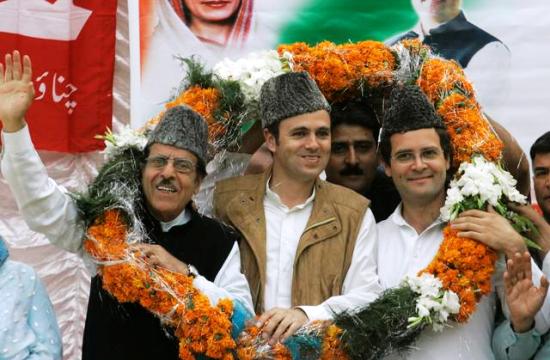
Professor Saifuddin Soz, who joined the Congress in 2000, had brought down an Atal Bihari Vajpayee government when he as National Conference parliamentarian voted against the party whip.
Congress rewarded him with a union cabinet berth in 2005 and later with the party’s state unit presidency in February 2008 following corruption allegations against Peerzada.
The decision to appoint Soz was finalized by Sonia Gandhi in consultation with Azad who was chief minister of Jammu and Kashmir. Underestimating Soz cost Azad dearly till he (Azad) left the party last month.
Azad-Soz Divide
The Azad and Soz lobbies within the party became a source of public embarrassment for the party and divided it further. The leg-pulling by both sides led the party to be disorganised and eventually Congress bagged its lowest share of seats in 2014 assembly polls since 1996.
However, the central leadership let both the groups foster in order to keep the other in check. Azad and Soz would only share a dais when the then Jammu and Kashmir affairs in-charge Ambika Soni would be visiting.
The rivalry reached the nadir in 2011 when both groups fielded candidates for the erstwhile legislative council elections in the state. While Azad camp fielded Abdul Gani Vakil, Soz put up loyalist Ghulam Nabi Monga. Both the groups declared that their respective candidates were backed by the high command, which, however, in line with their tried-and-tested strategy let both the groups prosper.
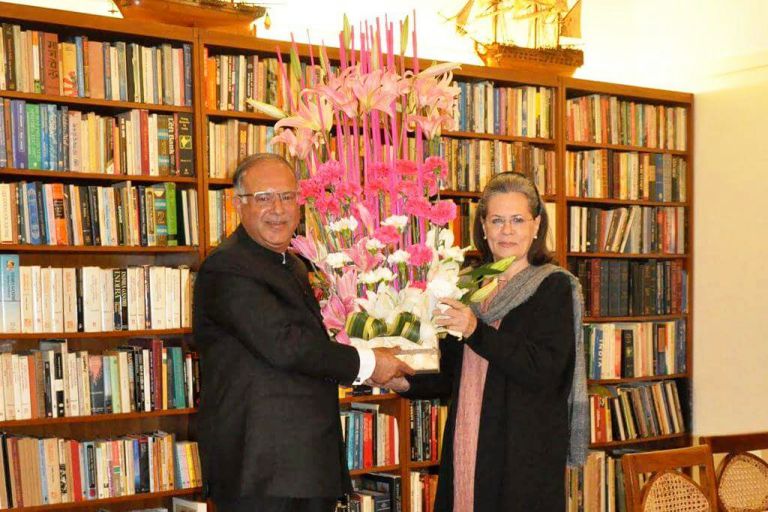 Azad was unable to scuttle Soz’s rise in Jammu and Kashmir and had to contend with a central minister post in the United Progressive Alliance-II government. Azad loyalists at the state level had to work around PCC President Soz when the party was a partner in Omar Abdullah-led coalition government.
Azad was unable to scuttle Soz’s rise in Jammu and Kashmir and had to contend with a central minister post in the United Progressive Alliance-II government. Azad loyalists at the state level had to work around PCC President Soz when the party was a partner in Omar Abdullah-led coalition government.
In 2011, a re-jig of the Congress Working Committee was carried out in which Azad managed to get in his loyalist Gulchain Singh Charak from Jammu while Soz was dropped from it. However, Soz’s loyalists in Jammu and Kashmir were contented to have the state unit only to themselves.
Soz was re-appointment PCC chief in 2013 just days after the then senior Congress leader and Azad loyalist, Taj Mohiuddin, had publicly expressed his desire to lead the party. Mohiuddin, later, alleged that “some forces” sabotaged his efforts by leading a smear campaign against him.
In December 2008, the Soz-led group wanted the party to align again with PDP, which earlier that year had ousted Azad. However, Soz couldn’t stitch that alliance and the party went on to support the National Conference.
In the run-up to the 2014 parliament polls, Azad, who was election committee chief and candidate from the Udhampur parliament seat didn’t get any support from Soz who maintained his distance from the campaign. Azad lost. But later that year, he didn’t campaign for Soz’s son Salman who contested in the assembly polls from Baramulla. Salman like Azad lost too.
Soz played his last hand and managed to break the alliance with NC just after the 2014 parliament polls and ahead of the 2014 assembly polls.
However, the loss for Congress in 2014’s twin parliament and assembly polls in Jammu and Kashmir cost Soz his party chief post. Ghulam Ahmad Mir, a loyalist of no faction but only of Gandhis was appointed as his successor.
Mir versus Karra
Mir’s anointment led to protests by both the Soz and Azad camps. Senior Congress leader and Azad loyalist Abdul Gani Vakil resigned from the party in protest, calling Mir “junior-most” in the party.
Mir now had only Azad’s camp to handle because, by then, Soz’s age had caught up making him feeble. However, just two years into Mir’s term, Congress’s high command got in a new player to create another power centre in Jammu and Kashmir Congress. Tariq Hameed Karra, Mufti Sayeed’s protégé and a parliamentarian who left his seat in protest against his party, the PDP’s, handling of the 2016 Kashmir uprising.
Karra joined the Congress in February of 2017 and was subsequently inducted into the highest decision-making body of the party, the Working Committee, only because he had Rahul Gandhi’s ear. The decision not only ruffled Mir’s feathers but also made Azad uneasy.
In 2019, party sources said, Azad made his reservations about Karra known to the high command when he was asked the reasons behind his unhappiness with the party leadership.

“Karra’s anointment as CWC member without consulting Azad was on number nine on the list of 14-point objections raised by him,” a source in the party said. “He (Azad) wasn’t happy about Karra being inducted into the party at a function where he wasn’t present. He wasn’t happy about granting Karra CWC membership as well.”
However, Rahul Gandhi’s plan to make Karra PCC chief was hindered by Azad’s opposition. Azad also let the status quo continue.
During this time Mir worked on expanding Congress’s membership in the state despite being comfortable with Azad and Karra, who were not attending party affairs in Jammu and Kashmir.
On the other hand, Karra, who had no friends in the party, played the patient game which ultimately paid dividends earlier this year in August when he was made the chief of the political affairs committee in which Azad was made a member under him.
A source in the Congress party said that while the national level problems between Azad and Gandhis were playing out, Karra enacted a page from his political guru, Mufti Sayeed’s book, who in the 1970s had similarly ousted Qasim with high command’s backing. “The players have changed but the game is the same in the Congress when it comes to Jammu and Kashmir.”
In case of Azad, the high command just didn’t sideline him but also broke his faction by rewarding his loyalist Vikar Rasool with the PCC chief job. Azad was made the Campaign Committee chief, which was to function only when the fresh elections in Jammu and Kashmir were to be held.
The name of Rasool was initially proposed by Azad who later became aware of his party’s intention to break his faction. In a meeting ahead of the new PCC chief’s appointment, Ghulam Mohammad Saroori, a staunch Azad loyalist who left the party with him, openly spoke against Rasool.
“He (Viqar Rasool) is the most junior of all. I do not know who is with him,” Saroori told the meeting. “Neither any leader from Kashmir nor from Jammu has acceptance over his name. None of the last assembly members are with him. Just talk to anyone.”
The high command, however, had made up its mind with tacit manoeuvring by Mir and Karra who joined hands to oust Azad. While Azad was removed, the party resorted to its decadal factionalism technique of handling Congress under which the party now is divided into Vikar Rasool, Tariq Karra, Ghulam Ahmad Mir and the working president Raman Bhalla camps.
Azad-Mufti Camps
In the multi-layered factional structure of the party, the two biggest leaders of Congress were Mufti Muhammad Sayeed and Ghulam Nabi Azad, the two congressmen from pre-Rajiv Gandhi era. Sayeed was an Indira Gandhi loyalist, Azad a Sanjay Gandhi one.
Interestingly, however, both detested Rajiv for different reasons. Sayeed wanted Rajiv to not ally with Farooq Abdullah while Azad is said to have initially resented the importance given to Rajiv Gandhi when he was brought into politics following Sanjay Gandhi’s death.
In some ways, Azad considered himself a stronger defender of party interests than Rajiv, a sentiment that has come up in a far more intense form against Rahul Gandhi over three decades later.
During Sayeed’s short re-entry phase in Congress from 1996 to 1999, he and Azad had two groups of their own along with a group of Ghulam Rasool Kar who was the then PCC chief. In order to show a united face, Mufti and Azad, accompanied the newly appointed PCC chief, Mohammad Aslam, to Jammu on July 17, 1998. That, however, was public consumption.
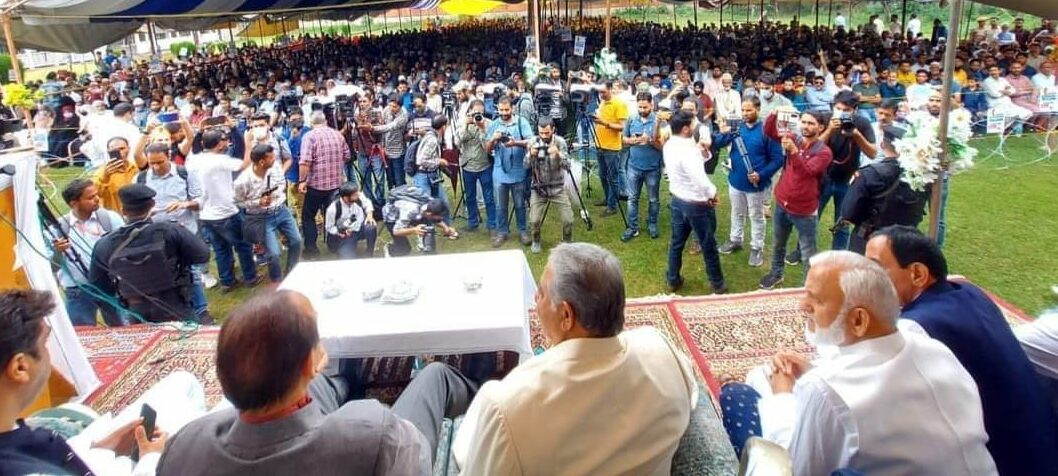
Azad continued dictating Jammu and Kashmir leaders from Delhi. His real faceoff with Sayeed was in 2002 when Dr Manmohan Singh cobbled the PDP-Congress coalition.
Azad had to wait for the chief minister’s post for three more years even though his party had won more seats than PDP. It was then that Azad was introduced to Sayeed’s politics of intrigue and backdoor manoeuvring. Taking a cue from this Azad cultivated a close relationship with Sayeed’s right-hand man Muzafar Hussain Baig who went on to become deputy chief minister in 2005 under Azad.
Baig, a senior PDP leader, was alleged to be hobnobbing more with Azad than PDP. Following this new bonhomie, Azad, in September 2006 appointed Baig as finance and planning minister. The move sparked a full-blown battle between the alliance partners as PDP had pitched Karra for the role. The PDP even withdrew Baig as deputy chief minister.
While the Karra-Azad rivalry has roots in the PDP-Congress government, it was Sayeed’s payback to Azad through his then-trusted lieutenant. In 2006, when Azad was chief minister of the coalition government and Karra a cabinet minister from the PDP quota, the duo couldn’t see eye to eye.
In a cabinet meeting, Azad declared to dissolve the assembly as Karra had not attended the meeting in order to downsize the former. The next day, Karra stated that PDP was ready to go for fresh polls prompting the chief minister to call another emergency cabinet meeting the next day. Karra again didn’t attend but the other three PDP ministers did go.
The Kashmir Obsession
The Congress’s current situation is an outcome of its focus on Kashmir while neglecting and eventually conceding Jammu to BJP. Congress won the majority of its seats from the Jammu region in four assembly elections since 1996. For most of its existence in Jammu and Kashmir, it was a Kashmiri Congressman leading the party.

In the 1996 elections, which National Conference swept, the BJP had still won eight seats and finished runner-up on nine berths. All these seats were in the Jammu region. The Congress was blinded by its 2002 victory in 20 assembly seats out of which 15 were from the Jammu region. The BJP, which had just one seat in 2002, was runner-up in 11 others.
The fortunes of the BJP changed in the Jammu division in 2008 post the Amarnath land agitation. In 2008, BJP won 11 seats and finished No 2 on 12 seats. The Congress which allied with NC, had 17 seats, 13 of them from Jammu.
The tables turned in the 2014 assembly polls when BJP won 25 seats in the Jammu division while being runner-up in four others. The Congress was reduced to 12 seats with just five in the Jammu division while seven came from the valley.
From 1996 to 2014, the Congress was headed by three Kashmiris – Kar, Peerzada, and Soz for 12 out of 18 years. It was only in 2022, that
Raman Bhalla was appointed Working President and Viqar Rasool, both from Jammu, as President.
Contradicting Ideologies
In terms of ideology, Congress has nothing to offer to Kashmir voters, most of whom blame the party for its problems throughout. In Jammu, BJP invoked faith and “discrimination” to bracket Congress with Kashmir parties – NC and PDP. On the flip-side, Congress’s “ideological bonding” with “secular parties” ended up dividing votes in mixed population areas thus helping BJP.
In 2014 assembly polls Congress went alone at a time when BJP was busy implementing Mission 44+. However, Congress’s campaigning lacked lustre. It led to the massive division of votes that impacted NC more.
Party’s reluctance to take an open stand either for Kashmir or Jammu divisions ended in the party being at loss in both. It goes to Congress’s credit that it noiselessly eroded Jammu and Kashmir’s special status between 1953 and 1990.
Exoduses
In such situations, Congress has to see the migration of the flock. Since 1998, it witnessed two exoduses. The first one was when Mufti Muhammad Sayeed left the party. Out of 16 seats that PDP won in 2002, nine were from Congress background.
Following Mufti, when Azad left after 53 years in Congress, most of the Congress moved with him – former deputy chief minister Tara Chand; former lawmakers Mohammad Amin Bhat (Qazigund), Gulzar Ahmad Wani (Shangus), Ghulam Mohammad Saroori (Inderwal), Abdul Rashid Dar (Sopore), Taj Mohiuddin (Uri), Peerzada Muhammad Sayeed (Kokernag); Choudhary Mohammad Akram (Surankote), RS Chib (Suchetgarh), Abdul Majeed Wani (Doda), Jugal Kishore (Reasi), Girdari Lal (Hiranagar), Gharu Ram (Suchetgarh), Mulla Ram (Raipur Domana) and Manohar Lal (Billawar). This is in addition to the scores of leaders who deserted the party.
Question
Now with factions out and the Congress having a literally clean seat, how possible is it for the party to revive. Vikar said the setback is huge but it will pave the way for success. Will it?















